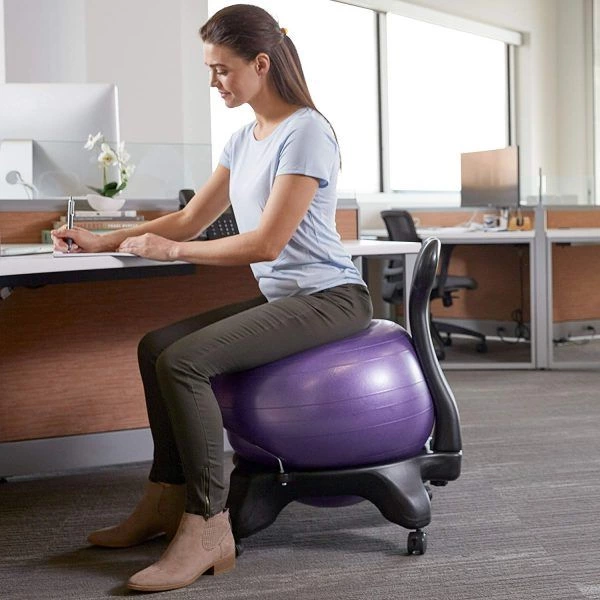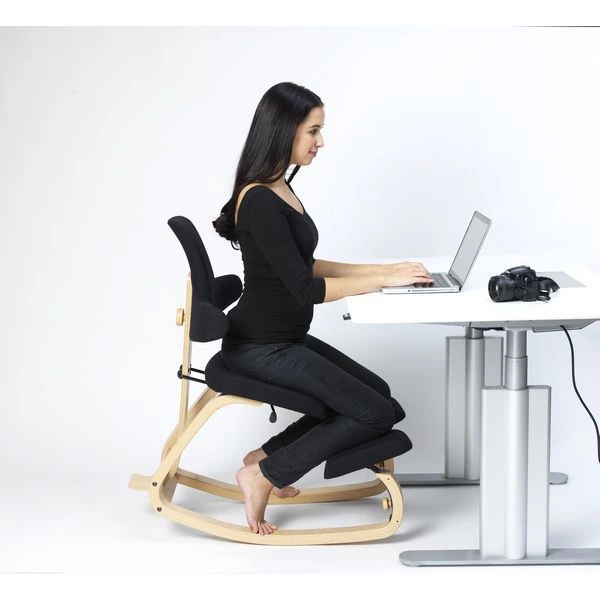Ergonomic Chair: A Buying Guide (6 Types of Ergonomic Chairs to Avoid)

In today’s marketplaces like Amazon, Alibaba, and AliExpress, there is an overwhelming number of ergonomic chairs available. However, choosing the wrong ergonomic chair can worsen long-term damage to your body. Unlike everyday items, ergonomic chairs are not something you typically replace shortly after purchase.
If make the wrong choice, the risk not only losing money but also incurring return shipping costs and wasting valuable time.
As a professional ergonomic chair manufacturer with 17 years of experience, we understand all the crucial details to consider in the office chair industry. By following this guide to buying an ergonomic chair, we believe you can make a precise and suitable choice for your needs. So let’s get started!
You should avoid purchasing: Ergonomic chairs with non-breathable materials.
Do not purchase chairs with non-breathable materials. PU leather does not have the same breathability as genuine leather, and leather itself is less breathable than foam. Foam is also less breathable than mesh.
When choose a non-breathable chair, the body will not only experience increased pressure, but sweat will also be trapped, leading to the growth of bacteria on back and seat area, especially during hot summers. Over time, this can result in dull skin, itching, and the development of red rashes on your back and seat area.
Therefore, Vaseat recommends that if you are looking for a long-term ergonomic chair, mesh chairs should be your first choice. However, if you are a woman who tends to feel colder, you may consider selecting a chair with a foam cushion.
You should avoid purchasing: Ergonomic chairs gas lift without certificate

When selecting an ergonomic chair, it is crucial to inquire about the gas lift with the manufacturer or seller. Choosing an untested gas lift means you will be working on a chair with potential safety hazards in the long run.
We recommend choosing gas lifts from reputable manufacturers that have obtained certifications and undergone testing such as SGS, TUV, BIFMA. Certified gas lifts will have stamped markings and a designated class (Class 1, Class 2, Class 3, Class 4) indicating their level of quality.
We recommend considering ergonomic chairs that use gas lifts from Sanhong. Compared to gas lifts from other manufacturers, Sanhong gas lifts have undergone extensive testing and have proven to be the most stable in terms of quality.
| Grade of Gas Lift | SGS International Certification/ TUV Germany Certification /BIFMA US Certification | Outer Tube Thickness and Inner Core Thickness | Internal Air Pressure ±2KG | 120K Rotational Test | 10K Impact Test | Recommended? |
| Grade 1 | X | Outer Tube Thickness: 1.0MM Inner Core Thickness: 1.2MM |
48 | X | X | NO |
| Grade 2 | X | Outer Tube Thickness: 1.2MM Inner Core Thickness: 1.5MM |
48 | X | X | NO |
| Grade 3 | ✔ | Outer Tube Thickness: 1.5MM Inner Core Thickness: 2.5MM |
48 | 乄 | 乄 | NO |
| Grade 4 | ✔ | Outer Tube Thickness: 2.0MM Inner Core Thickness: 2.5MM |
48 | ✔ | ✔ | YES |
| Note: When choosing a Grade 4 gas lift, it is important to check for the presence of certification stamps on the gas lift. | ||||||
In conclusion, considering user’s safety, we highly recommend purchasing chairs with Grade 4 gas lifts. The cost of these gas lifts alone before shipping is at least $6 USD, which implies that if customers purchase cheap ergonomic chairs, manufacturers are unlikely to provide Grade 4 safety gas lifts.
You should not choose to sit on a chair with a “potentially explosive hazard” hidden underneath.
You should not purchase ergonomic chairs with unstable chair bases

The most suitable chair base for an ergonomic chair is a five-star chair base. In terms of quality, the best options are aluminum bases and nylon bases, they have the same load-bearing capacity in same company. The next option would be faux nylon bases (made of TP material). Below that, there are metal welded chair bases, and the worst option is plastic bases.
Global certification standards for chair bases (SGS, TUVB, BIFMA) specify a load-bearing capacity of 1136KGS. If the five-star chair base you choose has not undergone any safety weight testing, it can also impact your safety.
If some of competitors only provide their supplier’s test reports without offering their own company’s test reports, it is an inadequate practice that may confuse and mislead customers.
As a professional company, it is essential to take responsibility for the quality and safety of your own products and provide your own company’s test reports as evidence. This demonstrates the company’s commitment to product quality and ensures customers receive accurate information. Misleading customers is not only unethical but also poses potential risks to their physical safety.
Customers should exercise caution when selecting suppliers or competitors and should request genuine and comprehensive test reports regarding the products. This ensures the purchase of products that meet quality and safety standards.
How to Choose the Right Chair Base Based on Your Weight?
| >130 KGS | Vaseat Metal Base, Vaseat Nylon Base (1400KGS+) |
| 100-130KGS | Vaseat Nylon Base (1400KGS+) |
| <100 | Vaseat Nylon Base (1400KGS+) |
Many manufacturers, in order to save production costs, may use PP material chair bases instead of nylon material chair bases. However, PP material chair bases can become brittle during winter and are prone to breakage.
Plastic and metal welded chair bases should be disregarded as these materials cannot pass any safety tests.
conclusion
When purchasing an ergonomic chair, it is important to prioritize your specific needs and consider various factors that contribute to comfort and support. While there are many types and designs of ergonomic chairs available in the market, it is crucial to understand that not every chair may be suitable for everyone.
In this guide, we have explored six common types of ergonomic chairs, each with its unique features and benefits. However, it is important to note that these are not the only options, and what may be the perfect chair for one person may not be suitable for another.
The key is to prioritize your safety and well-being. Consider factors such as adjustability, lumbar support, seat cushion firmness, chair base load-bearing capacity, and gas lift quality. It is recommended to try out different chairs as much as possible before making a final decision. Note to how the chair feels and whether it provides the necessary support for your body.
Furthermore, even with the most ergonomic chair, maintaining good posture and incorporating regular movement breaks into your daily routine is essential. No chair can completely replace proper posture and healthy habits. Remember to stretch your body, take short walks, and change your sitting position throughout the day to promote overall well-being and prevent discomfort or potential injuries.
Lastly, if you have specific requirements or existing conditions that may influence your choice of an ergonomic chair, consulting healthcare professionals or ergonomic experts is always beneficial. They can provide valuable insights and recommendations based on your individual needs.
By taking the time to research and understand the different features and considerations involved in purchasing an ergonomic chair, you can make an informed decision that supports your comfort, productivity, and long-term well-being. Your chair should be a tool that enhances your working environment and promotes healthy posture, allowing you to focus on your tasks and minimize discomfort.


